Please see my faculty page and my lab's website for more information about current projects and my team.
Conflicting Mechanical Objectives during Turns: During turns, each leg plays a distinct role in generating the reaction forces required to control both linear and angular momentum of the body. The reaction force regulation over time, generates linear and angular impulse needed for the desired movement. However, angular impulse about the body's center of mass involves reaction force components that are not aligned with the desired center of mass trajectory, which imposes conflicts in control priorities. Through coordination of each leg’s reaction force generation, the aforementioned conflicts are appeased.
To the right, you can click through videos and images to walk-through a turn's conflicting mechanical goals and an exemplar dancer's strategy to successfully accomplish these goals. (Graphics were generated using custom MATLAB software to display multiple reaction force vectors- dark green to light green- with each corresponding video frame.)
Model System: Turns performed by dancers provided a unique opportunity to understand how skilled individuals successfully satisfy competing mechanical objectives. I have determined how dancers satisfy the momentum and balance requirements of fundamental dance turns (Pique and Pirouette turns) with inherent variations of rotation and translation. Each served as a well-practiced turn that can be performed with increased rotational requirements (e.g. single, double, triple). Additionally, both turns imposed a challenge during the turn phase: the dancer must spin with single-limb support on an extended leg (extended knee and plantarflexed ankle), while supported by a very small base. The pique turn requires lateral body translation and is initiated using sequential foot contacts, whereas, the pirouette requires minimal body displacement and is initiated using double-limb support. The differences between turns affords a systematic investigation of varied mechanical goals. By using a within-subject experimental design, I was able to identify an individual’s control preferences across tasks, which can be used in the design of personalized feedback to improve performance.
Overview of Results: As rotational requirements increase in both turns, dancers generated more angular impulse (integral of moment applied over time) while maintaining linear impulse (integral of reaction force over time) generated during the turn initiation phases. Despite changes in reaction forces to increase angular impulse generation, each leg was coordinated such that the total linear impulse generated maintained alignment with the desired center of mass trajectory. Subject-specific strategies were used to increase angular impulse, including regulation of reaction force magnitude, direction, position vector length, and/or duration of moment applied.
Subject-specific strategies identified encourage the use of personalized feedback to an individual performer, given the performer's preferred solution spaces, rather than a "one-size-fits-all" approach to training interventions.
PUBLICATIONS FROM MY DISSERTATION
Zaferiou, A.M., Flashner, H., Wilcox, R.R., McNitt-Gray, J.L. (2017). Lower Extremity Control during Turns Initiated With and Without Hip External Rotation, Journal of Biomechanics 52: 130-139. doi: 10.1016/j.jbiomech.2016.12.017
Zaferiou, A.M., Wilcox, R.R., McNitt-Gray, J.L. (2016). Modification of Impulse Generation during Piqué Turns with Increased Rotational Demands, Human Movement Science 47: 220-230. doi:10.1016/j.humov.2016.03.012
Zaferiou, A.M., Wilcox, R.R., McNitt-Gray, J.L. (2016). Modification of Impulse Generation during Pirouette Turns with Increased Rotational Demands, Journal of Applied Biomechanics 32(5):425-32. doi:10.1123/jab.2015-0314
Zaferiou, A.M. and McNitt-Gray, J.L. (2016). Whole-Body Balance Regulation during the Turn Phase of Piqué and Pirouette Turns of Varied Rotational Demands, Medical Problems of Performing Artists 1. 31(2): 96-103. doi:10.21091/mppa.2016.2017

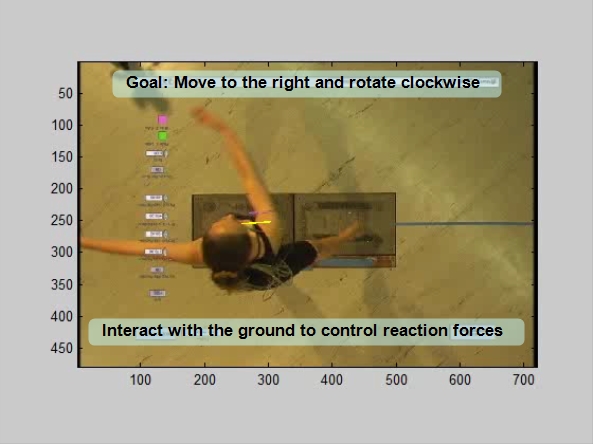
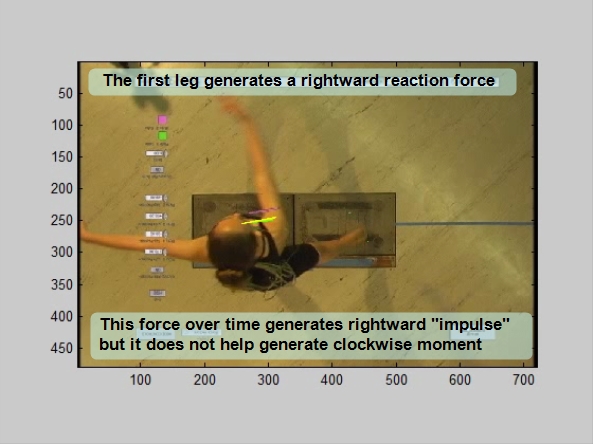

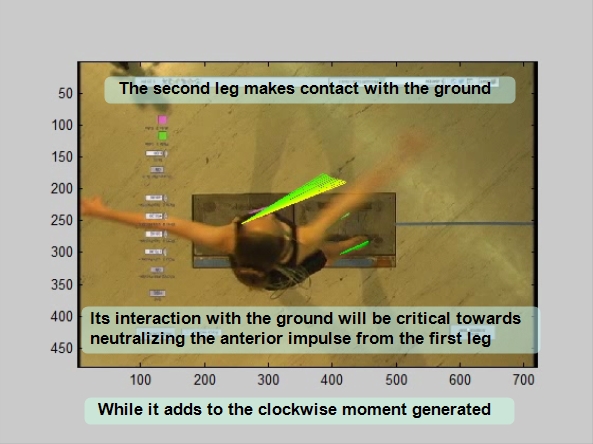
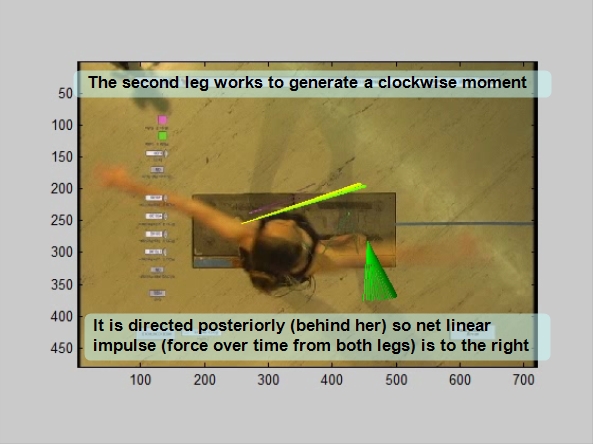
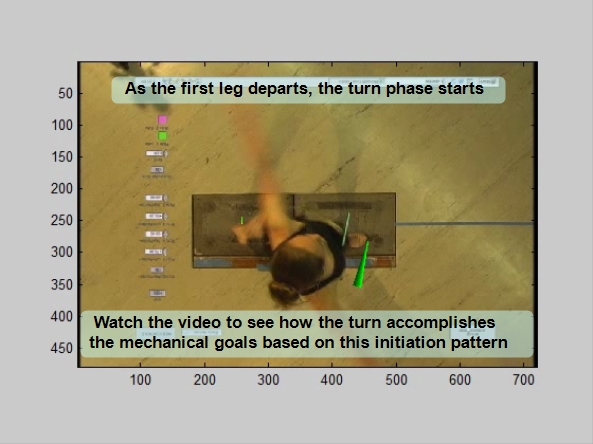
The dancer balances in the position maintained during the pirouette and pique turns. This is challenging because the base of support is small and the stance leg is extended. When the stance leg is extended, there are less opportunities available to redirect reaction forces to maintain balance.